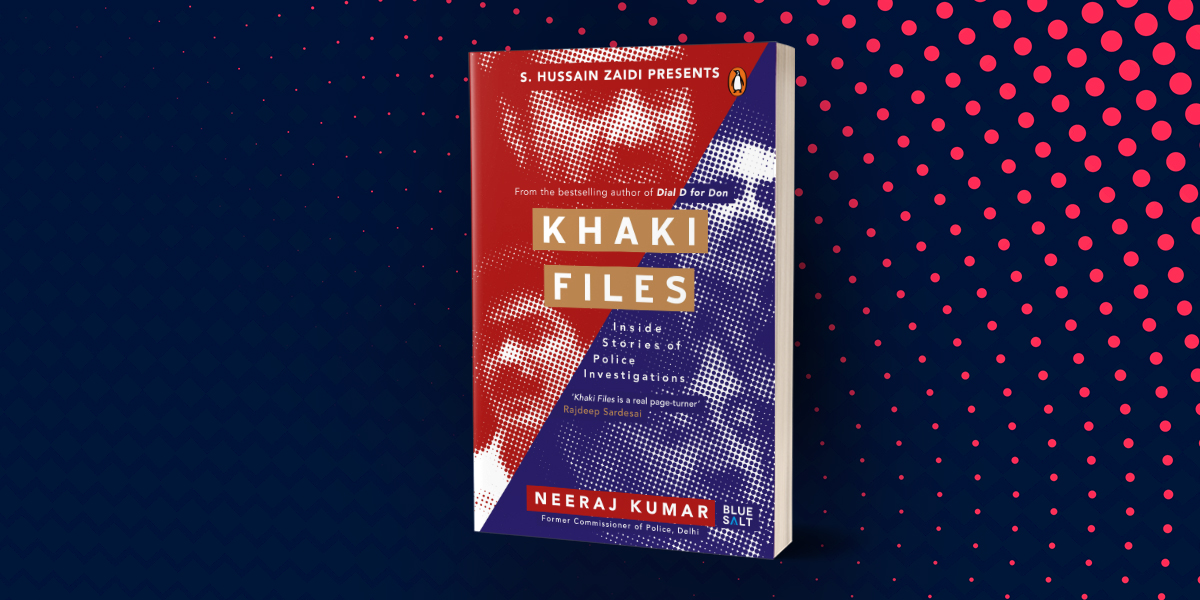
In Khaki Files, Neeraj Kumar, a distinguished former Delhi Police Commissioner revisits many sensational police cases of his career -from investigation of one of the biggest lottery frauds in the country to foiled ISI attempt to kill Tarun Tejpal and Anirudh Behal of Tehalka-bringing to light numerous achievements of the country’s police force, otherwise largely reviled and ridiculed.
One of the high- profile cases Neeraj worked on, during his stint at CBI, was that of the deadly serial bombings in Mumbai on 12 March 1993 that claimed 279 lives, caused injuries to nearly 700 people and damage to property, both public and private, worth hundreds of crores of rupees.
Read an excerpt from his book to discover how this case was solved under Neeraj’s leadership!
I reached Hyderabad at around 8 p.m. I was to stay in the local police mess, but I drove straight from the airport to the office of the ACP, who was a prominent member of the Anti-Terrorist Squad (ATS) in the Hyderabad Police. The real name of the ACP eludes me now, but I remember that he was popularly called Gabbar Singh. His colleagues, on account of his imposing height, build and rather villainous looks that belied his friendly disposition, had given him this moniker. It was a pleasure to meet him and exchange details of the work being done by our respective units, which led to an immediate kinship. Soon the ACP sent for his informant and in walked a short and frail man in his mid-thirties. He was unkempt and rather smelly. Gabbar Singh introduced me to him saying that I was the CBI officer sent from Delhi to follow up on the information he had. I tried my best to make the informant feel at ease and soon he began to talk freely with me in his typical Hyderabadi Hindi. His conversation with me, still etched in my memory, went something like this: ‘Sahib, apne kuch jaante jo tumko batana kya?’ (Shall I tell you something that may be useful to you), he asked. When I said he may, he asked me, ‘Kya aap AP Express ka bomb dhamaka case dekhte?’ (Are you looking into the AP Express blast case?) When I replied in the affirmative, he said, ‘Bombay me ek jagah hai Mominpura. Wahan ek doctor hai jiska naam apun ko nahee maloom. Par uska khairat ka ek hospital hai Mominpura mein. Woh mastermind hai, usko dhoondo, woh aap ko sab bata sakta hai.’ (There is a place in Mumbai called Mominpura where a Muslim doctor resides. He runs a charitable hospital but is the mastermind behind the blasts. Please look for him.)
The information was rather sketchy, but I had to make the most of it. The first logical step was to share it with my field officers in Mumbai. That would require the exchange of information in real time between Satish Jha—my able junior colleague and superintendent of police (SP) in Mumbai— and myself. Mobile telephony had not reached India as yet. To add to my woes, even the subscriber trunk dialling (STD) facility was not available on Gabbar Singh’s office phone. (In those days, official telephones, whether at home or at work, were provided with the STD facility only if they were for the use of very senior-ranking officers. I also remember that a common practice to avoid the misuse of the facility was to keep the telephone instrument locked or to protect its use by means of a code that was known only to the officers.)
So, I booked a trunk call (as inter-city calls were then called) and passed the information on to Satish. Five years my junior, Satish was a hands-on police officer known for his investigative and operational skills and had been with me on several sensitive missions. He quickly collected his team of handpicked officers and decided to rope in the Mumbai Police, which was just as well.
To get more inside glimpses of police missions, grab your copy of the book here!








